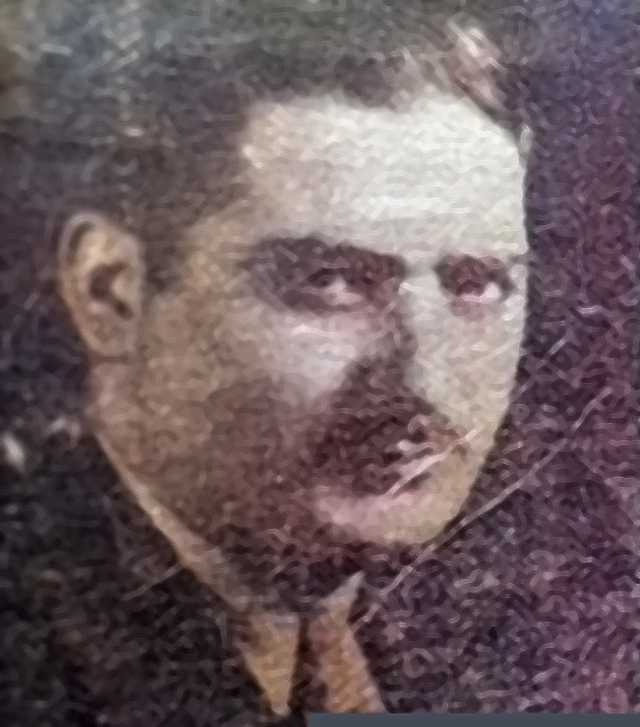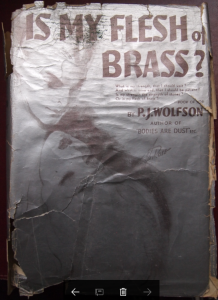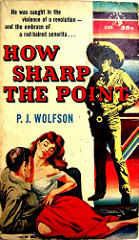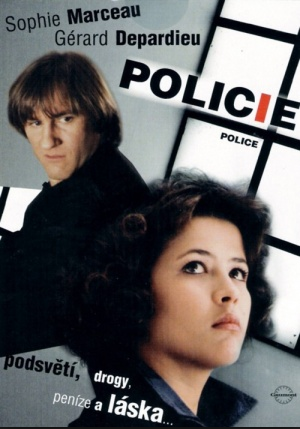
After I acquired Charles Grayson’s book Stories for Men, I couldn’t find really that much about the author, Charles Grayson. So, I did some research and filled in a lot of the background of his life from his college days to his death. While doing the research I encountered other Hollywood screenwriters as well, like Allen Rivkin, who didn’t have a lot of bio information about them.
Allen Rivkin did publish a book called Hello Hollywood! (Doubleday,1962) from which you can get a good sense about the kind of person he was. While doing the research on Allen Rivkin, I read about his early screenwriter collaborator in Hollywood, P.J. Wolfson.
P.J. Wolfson was a tough nut to crack.
I had encountered his name before in a book by Paul Duncan called Noir Fiction, Dark Highways (Pocket Essentials, 2000). In his book, Paul Duncan reviews P.J Wolfson’s major contribution to noir fiction. A novel titled Bodies are Dust.
Paul Duncan states that Pincus Jacob Wolfson was born on May 22,1903 and died in Calabasas, Los Angeles, on April 16th 1979.
Paul Duncan further states that, “Very little is known about what happened in between.”
Pincus Jacob Wolfson was born in 1903 to Russian immigrant parents. He was the son of Jacob and Amelia (Shebashon) Wolfson who likely came to America to escape the Russian pogroms. Settling in lower eastside of Manhatten, his father was a plumber. Growing up in Manhatten and later the Bronx with four other siblings , Pincus later worked with his father who by the time Pincus was a teenager owned a plumbing business. [source: U.S. 1920 census]
“While you give the impression that my father was born and raised in the Bronx, that is not quite the case. He was born on the lower eastside of Manhattan in the turn of the century tenement district teeming with jewish immigrant families. Years later, when his father’s work as a plumber began to earn enough money, the family did move to the Bronx.” – Michael Wolfson [source: Wolfson, Michael. “Re: P.J. Wolfson.” Email to the author. 30 July 2010.]
But a plumber, Pincus was not to be. He enrolled in Fordham University and studied to be a pharmacist. While in college, Prohibition was going on in full swing in New York City. Later in a Los Angeles 1932 newspaper review for Night World (1932), it was said that Wolfson knew his metropolis “from the Battery to the Bronx” . P.J. Wolfson and Allen Rivkin wrote the story for Night World that captured a glimpse of the crime ridden era of Prohibition and New York speakeasies that influenced Bodies are Dust.
In 1926, P.J. married Billie Marmon. There were three children. Carolyn was born that same year and Michael (b. 1935) and son Peter (b. 1938) followed.
[source: Wolfson, Michael. Personal Interview. 28 July 2010.]
“My father worked as a pharmacist for a while and then married my mother, Billie Marmon, in 1926. They moved from New York City to Binghamton, New York, and bought a drug store. Unfortunately, my father was not a businessman and the store subsequently failed. They then moved back to New York City and he took a job as a pharmacist in a drugstore next to Madison Square Garden.
There were five children in the family – 3 boys and 2 girls. My father was the second oldest. When he was in high school, he decided he wanted to be an artist and go to an art school or major in art in college. His parents were against it and insisted, as many immigrant parents did, that he train in a respected profession. He once told me that he chose pharmacy because, at the time, it took the shortest time to train and be licensed. (I seem to remember it was only a two year program then.) His siblings also followed their parents advice and one of his brothers became an engineer, another brother a doctor and a sister a psychologist.” – Michael Wolfson [source: Wolfson, Michael. “Re: P.J. Wolfson.” Email to the author. 30 July 2010.]
It was during the late 1920’s after graduating college and later working as a pharmacist, Pincus formed the seeds of writing Bodies are Dust. He published it to good reviews in 1931. Here’s an excerpt below from the New York Times:
“The intricate plot includes suicide, murders, blackmail, ticket rackets, gang warfare, police corruption, and surgical operations. Most of this feast for the public is contributory to the plot or to the depiction of the character; even those drunken parties and sex episodes which seem extraneous might be alibied if not jusitifed. The construction work is admirable.” – [NYT book reviews 9 Aug. 1931]
“Shortly after he received his pharmacy degree from Fordham, he decided if he couldn’t be an artist, he could satisfy his need to create by doing some writing. To this end, he took some evening english courses to help in his writing and in his exposure to literature. Thereafter, he started to write at odd hours and finally began the writing of Bodies Are Dust. One reason the Binghamton drugstore failed was that he was always writing in the back of the store whenever he could and wasn’t paying attention to and developing the business. When they returned to New York city after the store failed, he intentionally took the late shift at the drugstore next to Madison Square Garden so that during the quiet times at night before events let out, he could continue writing.” – Michael Wolfson [source: Wolfson, Michael. “Re: P.J. Wolfson.” Email to the author. 30 July 2010.]
Bodies are Dust was noticed by Hollywood and P.J. was placed under contract by Carl Laemmle Jr. (Junior Laemmle) to write original photoplay stories for Universal. He left for Hollywood the same year the book was published in 1931. [source: Screen Notes, NYT, 26 Sept. 1931]
During the 1931-1934 period, P.J. wrote three other novels, Summer Hotel (Vanguard 1932), All Women Die (Vanguard 1933), and Is My Flesh of Brass? (Vanguard 1934).
He then went on to a very productive Hollywood career in film and television. He wrote film scripts and produced numerous films, directed one film, and produced the television series I Married Joan and Love and Marriage.
Later in his career, he was represented by Helen Strauss at the William Morris Agency in New York.
“His William Morris agent was probably for his TV work, since his agent during the 1940’s was an independent agent named Mike Levy, as I recall.” [source: Wolfson, Michael. “Re: P.J. Wolfson.” Email to the author. 30 July 2010.]
Early in his 1930’s Hollywood career, Wolfson’s agent was Milton Bren who was the last husband of Claire Trevor, “the Queen of Film Noir”.
According to Allen Rivkin in his book Hello Hollywood, “My collaborator, P.J. Wolfson, was represented by a new firm called Bren and Orasatti. Milton Bren, a recent USC athlete, had had production training, had done some real estate (later he built the entire Sunset Strip, or most of it) and thought he could do a better by channeling his enthusiastic personality into the agency business.” [source: Rivkin, Allen and Laura Kerr. Hello Hollywood. New York: Doubleday, 1962]
P.J. Wolfson’s Film & Television career timeline:
- Universal, Paramount, writer, 1932
- Warner Brothers, MGM, RKO, Paramount, writer, 1933-1936
- K.O. Studios, Los Angeles, writer-producer, 1936-1939
- Columbia Pictures, Los Angeles, writer-producer, 1939-1944
- Paramount Pictures, Los Angeles, writer-producer, 1944-1948
- Paramount Pictures, Los Angeles, writer & free-lance writer, 1948-1952
- Joan Davis Productions, Los Angeles, producer, 1952-1956
- Edelman Productions, Los Angeles, producer, 1956-1961
[source: Contemporary Authors,Gale Research Company 1969]
According to Hedda Hopper‘s gossip column, “Paramount said good-bye to P. J. Wolfson when his contract still had two years and $250000 to run.” [source: Looking at Hollywood, March 26, 1948]
However, this was not the whole truth since P.J. had negotiated a sweet deal with Paramount. “His agent negotiated what was at that time an unusual deal with Paramount. The contract not only paid him a large sum each of the two years, but allowed him to work at home and not come into the studio to write. That was almost unheard of at the time.” [source: Wolfson, Michael. “Re: P.J. Wolfson.” Email to the author. 30 July 2010.]
During his time in Hollywood, there are a few anecdotes from Allen Rivkin about their fun times on the studio lot. There is mention of P.J’s gun collection and some episodes with Hollywood director John Huston (a friend of Charles Grayson).
“Rivkin said he especially remembers one Christmas day when he, Huston, and writer PJ “Pinky” Wolfson got roaring drunk. Wolfson, who had an extensive gun collection, had brought a .25 to the studio and was showing off.” [source: John Huston, The Maker of Magic by Stuart M. Kaminsky, Houghton Mufflin 1978]
In 1956 he married a younger woman , Joan Virginia Lorish, who was 33 at the time they were married. They later divorced ten years later in 1966. [source: Los Angeles Divorce Records 1966-1977] There was one stepson, Barry. [source: Contemporary Authors, Gale Research Company 1969]
P.J. served in the U.S Coast Guard Reserve and was a member of the Authors Guild, Screen Writers Guild, and the Beverly Hills Tennis Club. He liked to paint and was also an outdoors man who enjoyed fishing and hunting.


Author Photograph: Jon Wolfson
I did get some information from two of his contemporaries, Sherwood Schwartz and John Rich.
From correspondence with Sherwood Schwartz who worked with P.J (known as Pinky to some) on the TV show, I Married Joan:
“I remember those years as a troubled time in the entertainment industry, particularly for writers, because of the McCarthy Hearings. We had one brief conversation on that subject. I think the bigger problem for Pinky was the fact that the Musicians Union was out on strike so the theme song had to be hummed by singers with no instrumental accompaniment.
Physically, Pinky was kind of average in height and weight. He seemed to have a slight European Accent.
Aside from discussing our work together on the show, we had very little contact, so there isn’t much I can say on the subject of Pinky. I didn’t even know he had written a book.” – Sherwood Schwartz [source: Schwartz, Sherwood. Personal Correspondence. 12 May 2010.]
From correspondence with John Rich who also worked on the television show, I Married Joan:
“As a director of one season of the TV Series, “I Married Joan”, I had very little contact with Mr. Wolfson, who was rather distant and private person. He worked primarily with the writing staff and left the directing to me. I remember him as being short of stature, balding and remote. Sorry I can’t be of more assistance.” –John Rich [source: Rich, John. Personal Correspondence. 27 May 2010.]
P.J Wolfson’s early career was heavily influenced by Prohibition and coming of age in New York City. Later, he enjoyed a successful career in Hollywood during its Golden Era. I would guess he spent his retirement during the late 60’s and 70’s fishing and enjoying the outdoors of beautiful Southern California.
On a final note, there is mention of a novel in progress in the short bio submitted to Contemporary Authors in 1969.
Carolyn Zeitman and Michael E. Wolfson were the last holders of his copyrights.
A listing of P.J. Wolfson’s published works and reprints:
- Bodies are Dust, Vanguard 1931
- Summer Hotel, Vanguard 1932
- All Women Die, Vanguard 1933
- Corpse Perdus, Gallimard 1933 ( Corpse Perdus is a French translation of Bodies Are Dust.)
- Is my Flesh of Brass?, Vanguard 1934
- Pay for Her Passion, News Stand Library 1949 (Reprint – Is my Flesh of Brass?, Vanguard 1934)
- This Woman is Mine, Popular Library 1951 (Reprint – All Women Die, Vanguard 1933)
- The Flesh Barons, Lion Library 1954 (Reprint – Is my Flesh of Brass?, Vanguard 1934)
- How Sharp the Point ,Pyramid 1959 (French title “Bataille de coqs” , Gallimard, 1968)
- Hell Cop , Berkley 1960 (Reprint – Bodies are Dust, Vanguard 1931)
- Three of a Kind, Berkley 1962 (Reprint – All Women Die, Vanguard 1933)
- A Nos Amours (Serie Noire), Gallimard 1993 (Reprint – Bodies are Dust, Vanguard 1931)
- Geißel der Niedertracht (German title “Scourge of Malice”), Maas 2003 (Reprint – Bodies are Dust, Vanguard 1931)


In 1985, Bodies are Dust was the basis for the French film Police starring Gerard Depardieu and Sophie Marceau.

“.. his voice getting louder as he came nearer and dying out as he went away, and all that was left was the sound of her low voice crying mixed with the jazz music.” – Bodies are Dust
A very good entry on P.J. Wolfson was found in the Encyclopedia of Pulp Fiction Writers by Lee Server (Infobase Publishing, 2002).
Comments:
Marla Wolfson 2010/08/05 at 6:56 pm said:
“I am the grand-daughter of PJ Wolfson and the daughter of Michael Wolfson. Thank you for doing such an honorable story about my grandfather as a man and artist.”